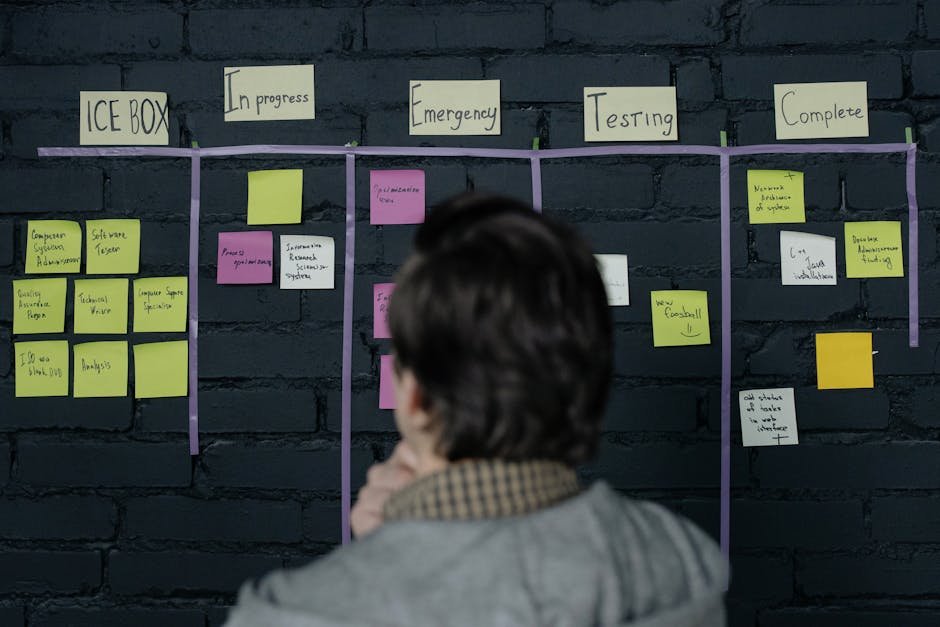Agile Estimation Techniques: How to Plan Accurately
In the fast-paced world of software development, accurate planning can be the difference between project success and failure. Agile estimation techniques are designed to address this challenge by providing a flexible, collaborative, and iterative approach to estimating project timelines and resources. In this comprehensive guide, we will explore the most effective agile estimation techniques, offer actionable tips, and discuss how to implement these strategies to enhance your project planning.
Understanding Agile Estimation
Agile estimation is a cornerstone of Agile project management, aiming to improve accuracy and adaptability in project planning. Unlike traditional estimation methods that often rely on fixed timelines and rigid requirements, Agile estimation embraces change and encourages team collaboration. According to the Standish Group’s Chaos Report, agile projects are 28% more successful than traditional projects, underscoring the importance of effective estimation techniques in Agile methodology.
Why Agile Estimation Matters
Accurate estimation is crucial for several reasons:
- Resource Allocation: Ensures that resources are assigned efficiently, minimizing waste.
- Stakeholder Confidence: Builds trust with stakeholders by providing realistic timelines and deliverables.
- Risk Management: Allows teams to anticipate potential obstacles and plan accordingly.
Top Agile Estimation Techniques
Let’s delve into the most popular Agile estimation techniques that can help your team plan more accurately.
1. Planning Poker
Planning Poker is a consensus-based estimation technique that leverages the collective wisdom of the team. Here’s how it works:
- The product owner presents a user story to the team.
- Each team member selects a card with an estimate, typically using a Fibonacci sequence (1, 2, 3, 5, 8, etc.).
- All cards are revealed simultaneously, and the team discusses any discrepancies.
- The process is repeated until a consensus is reached.
Planning Poker encourages team collaboration and helps identify knowledge gaps early in the process.
2. T-Shirt Sizing
T-Shirt Sizing is a simple, intuitive method for estimating the relative size of user stories. This technique uses sizes such as XS, S, M, L, and XL to represent the effort required. T-Shirt Sizing is particularly useful for initial backlog grooming sessions where detailed estimates are not yet necessary.
3. The Bucket System
The Bucket System is an efficient estimation technique for larger teams or extensive backlogs. Here’s how it works:
- Divide the team into smaller groups.
- Each group places user stories into “buckets” representing different sizes (e.g., 1, 2, 3, 5, 8, 13).
- Review and adjust the placement of user stories collaboratively.
This method is efficient and helps quickly categorize user stories without extensive discussion.
4. Dot Voting
Dot Voting is a simple prioritization and estimation technique that helps teams focus on the most critical tasks. Team members use dot stickers to vote on user stories they believe are high priority. The stories with the most dots are addressed first, helping teams allocate resources effectively.
Implementing Agile Estimation Techniques in Your Projects
To successfully implement Agile estimation techniques, consider the following actionable tips:
1. Foster a Collaborative Environment
Encourage open communication and collaboration among team members. Agile estimation thrives in environments where team members feel comfortable sharing their insights and concerns.
2. Regularly Review and Adjust Estimates
Agile estimation is an iterative process. Regularly review and adjust estimates based on new information and changing project requirements. This flexibility helps teams stay on track despite evolving challenges.
3. Invest in Training and Tools
Provide training on Agile estimation techniques and invest in tools that facilitate collaboration and estimation processes. Tools like Jira and Trello offer features that support Agile estimation and can enhance team productivity.
Challenges and Solutions in Agile Estimation
Despite its advantages, Agile estimation can present challenges:
1. Estimation Bias
Team members may have biases based on past experiences or knowledge gaps. Regular training and diverse team composition can help mitigate these biases.
2. Scope Creep
Scope creep can derail even the best-laid plans. To combat this, maintain a clear product vision and regularly communicate with stakeholders to manage expectations.
3. Over-reliance on Tools
While tools are essential, over-reliance can lead to rigid processes. Strike a balance between tool usage and human interaction to maintain agility.
Conclusion
Agile estimation techniques are essential for accurate project planning and successful Agile project management. By adopting techniques like Planning Poker, T-Shirt Sizing, and the Bucket System, teams can improve accuracy, foster collaboration, and enhance adaptability. Implementing these techniques requires a commitment to continuous learning, open communication, and flexibility. As Agile methodologies continue to evolve, mastering these estimation techniques will be crucial for teams looking to thrive in a competitive, fast-paced environment.
By utilizing these strategies, your team can more effectively navigate the complexities of project planning and deliver successful outcomes. Remember, the key to Agile estimation is not just about predicting the future but being prepared to adapt to it.













